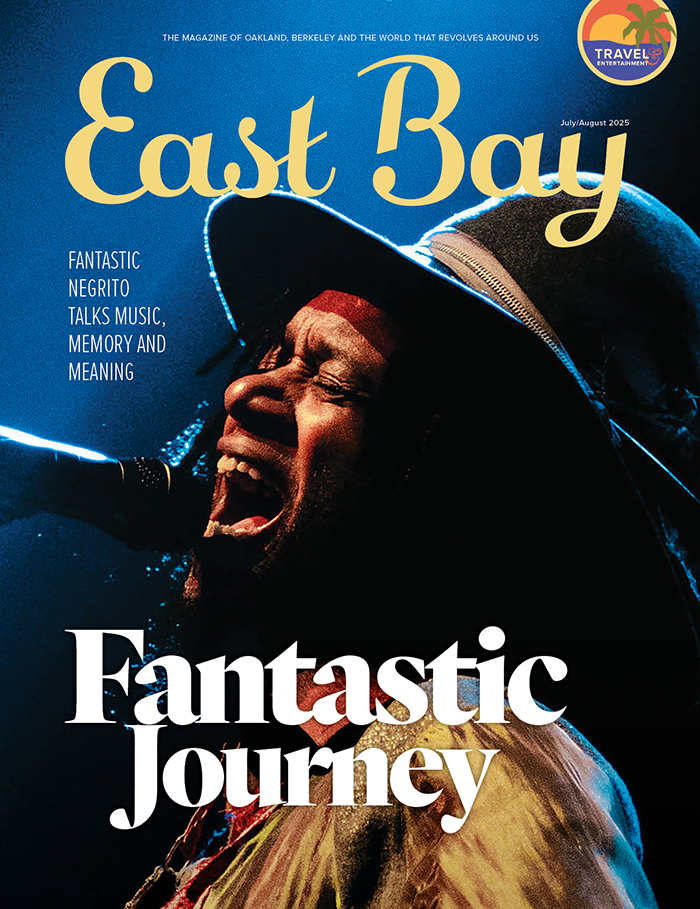Lately, I’ve been asking family, friends and even near-strangers if they’ve ever experienced loneliness and if the pandemic made it worse. If one is seeking a universal “yes,” those are the perfect questions to ask. I did not take joy in our shared suffering but did begin to think maybe I wasn’t neurotic—not to mention immunocompromised and fantasizing life would be different.
And then, a few months ago, listening to the nightly news, I heard United States Surgeon General Dr. Vivek Murthy referring to our loneliness as a “national epidemic” and felt even more validated. Murthy even issued an 85-page advisory. In an April 2023 essay in The New York Times, he wrote, “At any moment, about one out of every two Americans is experiencing measurable levels of loneliness.”
My interest was extended by a journalist’s high propensity for curiosity. I began to research, which happens to be one way I handled my ongoing loneliness. Learning more about the topic and finding ways to reverse the negative flow of loneliness led to solutions that worked for me. It filled the time and connected me to my close friends and family, the local community and people across the country. Here’s some of what I learned, followed by suggestions that might help combat loneliness.
The common constellation of emotions that constitutes loneliness results from a broad spectrum of causes, including actual, imagined, self-inflicted, systemic, economic—and other accelerants, such as the prevalence of technology and social media—that can lead to isolation. In contemporary culture, we refer to it on the downside as “otherness,” “lacking a tribe,” “lonely” or simply “being too much alone.”
On the opposite end of the spectrum, someone choosing to spend considerable time in solitude is embraced as an intentional nomad, free-spirit, or admired as someone seeking enlightenment through spiritual retreat or solo mindfulness practice. When the separation is physical, a person deliberately living in isolated surroundings is respected as an esoteric, devout environmentalist or nature-lover who makes a home in a remote, less-developed location.
Actual loneliness is different from being alone. The former is a disconnection that can be experienced even in a crowd; the latter is a lifestyle or episodic choice. A person in a rewarding intimate partnership, who has or doesn’t feel the need for hundreds of social media “friends,” might suffer from feeling disconnected from larger society.
Alternatively, a highly social person who volunteers or carries a prominent profile in a community might grieve over the lack of a romantic partner or a best friend. Loneliness is complex, and the only thing easy to tickle out is that almost everyone has firsthand knowledge and has experienced it.
One of the traps of the condition, particularly if combined with shame, is the tendency for a lonely person to catastrophize. “I’m the only person in the history of mankind who has ever felt this isolated,” one might think. The sufferer and other people might be quick to pathologize the situation, with comments such as, “I/You must have a mental health condition. I/You should see a therapist.”
Self-rebuke and well-intended but misguided encouragement—chin up, just get over it, keep a journal, get a dog, “think of all the people who have it worse than you do”—intensify the verbal whipping and actually might increase isolation under the crescendo of verbal abuse.
The problem sweeps thousands of individuals into therapists’ offices. Having already hoarded and exhausted self-help books and online apps, having searched the Internet for “my people,” they are desperate for a cure or even momentary relief. Loneliness experienced before, during and especially following the coronavirus pandemic is not just bandied about in social psychology research labs and think tanks, but has captured America’s political gaze. Experts say it’s among topics discussed at every level of public health.
Make no mistake; it’s fair for the surgeon general and others along with him to suggest America has a loneliness pandemic. With distressing evidence of increased suicides, death rates and serious health risks from conditions related to the mental and physical symptoms experts associate with loneliness, their concern is backed up by real data, not just anecdotal.
“When people are socially disconnected, their risk of anxiety and depression increases,” writes Murthy. “So does their risk of heart disease (29%), dementia (50%) and stroke (32%). The increased risk of premature death associated with social disconnection is comparable to smoking daily and maybe even greater than the risk associated with obesity.”
In the Health and Human Services (HHS) report, Murthy stated that loneliness was most pronounced in young people aged 15-24 who had 70% less in-person social interaction with their friends. A 2022 paper from Johns Hopkins University found that socially isolated older adults also had a higher chance of developing dementia than their peers.
A July 14 article from The Conversation, a national nonprofit, independent news organization, reported more research-backed facts: A 2021 survey by Cigna showed nearly 1 in 6 Americans reported feeling lonely or isolated. Young adults in the survey were nearly twice as likely as people over age 65 to report feeling lonely or isolated.
Similar conditions were reported by 75% of Hispanics, 68% of Black or African-American people, and the majority of lower-income respondents and single parents. Severe physical and mental health conditions—obesity, dementia, heart disease, stroke, diabetes, depression, anxiety and other chronic illnesses—lead to shortened lifespans and poor quality of life.
To address the issue of loneliness and isolation following the pandemic, the National Institutes of Health launched the Researching COVID to Enhance Recovery (RECOVER) initiative. With funds allocated by Congress, NIMH sought to determine the medical aftereffects specific to COVID, but with no guarantee of the limited money continuing, actual progress to deliver results and actual solutions remains indeterminate.
Notably for those people searching for a glimmer of light in a dark tunnel, there’s some grassroots relief found in groups such as Seniors Taking Action, Lady Gaga’s Born This Way Foundation, the Troops First Foundation for military veterans and numerous organizations dedicated to providing a social connection for LGBTQ+, BIPOC and other under-supported communities. A course offered as a podcast at Yale University, “The Happiness Lab,” has host Dr. Laurie Santos introducing scientific research that shows what does and does not make people happy (or less lonely).
Books are a sturdy resource for people hoping to combat loneliness. In 2020, Murthy authored Together, a book encouraging people to focus on relationships and life purpose more than career achievements and productivity.
A brand new book by Andy Field, Encounterism: The Neglected Joys of Being in Person, makes the argument that after almost three years of COVID-dictated isolation, we need to inhabit shared spaces. The London-based artist creates projects inviting people to explore in-person experiences as common as going to a hair salon, striking up a conversation with (instead of ignoring) the homeless person one passes on a daily commute, or sharing an umbrella with a stranger or neighbor during a rainstorm.
Experts point to larger changes or foundational pillars society must use as we begin to address loneliness. The first step includes acknowledging everyone at some point in life will experience loneliness. But, accepting the condition does not mean being passive.
Secondary steps might be to strengthen the social infrastructure of community connections by striking up conversations with people met in parks, the grocery store, public libraries and similar places—or joining an advocacy group that seeks things such as paid family leave, accessible technology for all, or improved funding and services to address negative health consequences related to loneliness.
Casual friendships might be improved by choosing to engage in person by using public transportation, joining a fitness club, attending local meetings instead of remotely on Zoom and participating in groups interested in the same things. Intimate relationships require a larger investment of time, so considering in advance exactly what is desired—whether it be a lover, a travel companion, a formal relationship—helps determine the paths to pursue.
Many of us might think these are fine ideas, but they won’t produce immediate effects. Those who are lonely want to know what can be done now. The following are a few isolation-busting suggestions specific to the East Bay, with the idea that similar activities—and even some of the actual organizations—pertain to other cities and regions.
Memberships: Joining a social or business club is a natural way to increase in-person interactions.
The Berkeley City Club comes with pedigree built into the foundations: in the architectural design of California’s heralded architect, Julia Morgan, and in its long history of supporting and amplifying the voice of women leaders. Originally commissioned as the clubhouse of the Berkeley Women’s City Club, the landmark building is listed on the National Register of Historic Places. More importantly for those looking for social, civic and cultural connection, City Club’s mission continues to be progressive.
Members gain access to the heated indoor pool, fitness room, members-only workspaces and lounges, and special guest rates for the club’s hotel rooms, classes and events. Invitations to mixers, exclusive dinners in Julia’s Restaurant or Morgan’s Bar & Lounge, and special rates on private events such as weddings and business meetings are available.
Programs include a book club, paint nights, yoga and tango classes, an arts & culture program series, wine tastings and Beer Fest Fridays, and more. Membership ranges from an initiation fee of $1,000 and monthly dues of $179 for single memberships up to household memberships with respective fees of $1,500 and $340.
A less expensive way to participate is to purchase tickets to events open to the public, among which there are many options. Viewing the online events calendar allows one to explore club offerings before taking a full plunge into membership.
The Claremont Club & Spa, a Fairmont hotel, is an iconic East Bay landmark that was established in 1915, situated on 22 acres with views of San Francisco. Members gain daily access to its extensive facilities, including three heated outdoor pools, tennis and pickleball courts, state-of-the-art fitness equipment, guided instruction and over 75 weekly wellness classes, with exclusive savings at Fairmont Spa, Limewood Bar & Restaurant and East Bay Provisions.
The Commonwealth Club claims to be the country’s oldest and largest public affairs forum. The club addresses politics, culture, society, climate, economy and more through events in the East Bay and the greater Bay Area. A weekly radio broadcast is carried by more than 230 public and commercial stations scattered across the nation, and a selection of programs are podcasts, video broadcasts or posted in a website archive. The club’s upcoming travel opportunities offer trips to the Canadian Rockies, the Republic of Georgia, the Greek Islands, Turkey and Cyprus, the Deep South, South Africa and other locales.
Recent programs have had experts speaking on transportation, literature, social media, wealth equity and the future of housing in the Bay Area, among other topics. Most events are open to the general public, making it easy to purchase a ticket and find out if the club is a good fit. Memberships begin at $120 for individuals and rise to the $1,000 Leadership Circle, with reduced prices for students and educators and options for corporate memberships.
The Urban Adventure Club is based in San Francisco and offers events throughout the Bay Area, with excursions to places beyond. There are Learn to Play Texas Hold’em Poker nights, a virtual program for creating online dating profiles, dinner cruises and local restaurant outings with hosted meals, and paddleboard classes, as well as ongoing events such as social tennis on Sundays, game nights, ubiquitous pickleball competitions and classes, and more.
Upcoming trips include a Sequoia National Park hiking adventure, tubing, hiking and wine tasting on the Russian River and a weekend on a Lake Shasta houseboat. Memberships start at $25 per month, with people looking to join two or more events per month benefitting from three-month and one-year memberships that offer savings on monthly dues and greater discounts on event access. A 30-day free trial is available, and members may upgrade at any time.
Other Ideas
Membership in a club is but one of the many ways people can find or explore new relationships and social connections. Free or low-cost options include recreation departments in local cities and towns, neighborhood walking and book clubs, and faith communities offering a wide variety of interfaith, non-denominational as well as religious institutions.
Public libraries in the post-pandemic world have returned to plentiful programming, with weekly events, workshops, classes and special events designed for patrons of all ages. Art centers and community choirs and orchestras appeal to people interested or accomplished in the arts; volunteer ushering or docent duties serve individuals with connections to theater, museums and history.
People in the UK and Australia have established specially designated “chat benches” where people can meet for community conversations—maybe start one in a local neighborhood? A person might also look online for Civic Suds, a group that meets in laundromats.
For those interested in public policy, economic vitality and advocacy aimed at preserving the quality of life in the area, there are organizations such as the East Bay Leadership Council. Events include an annual advocacy day, a Leadership Series featuring thought leaders and keynote speakers, the East Bay Philanthropy Awards, and the Capitol Series, with elected officials from Washington, D.C. and Sacramento discussing issues important to East Bay employers and members of the EBLC.











